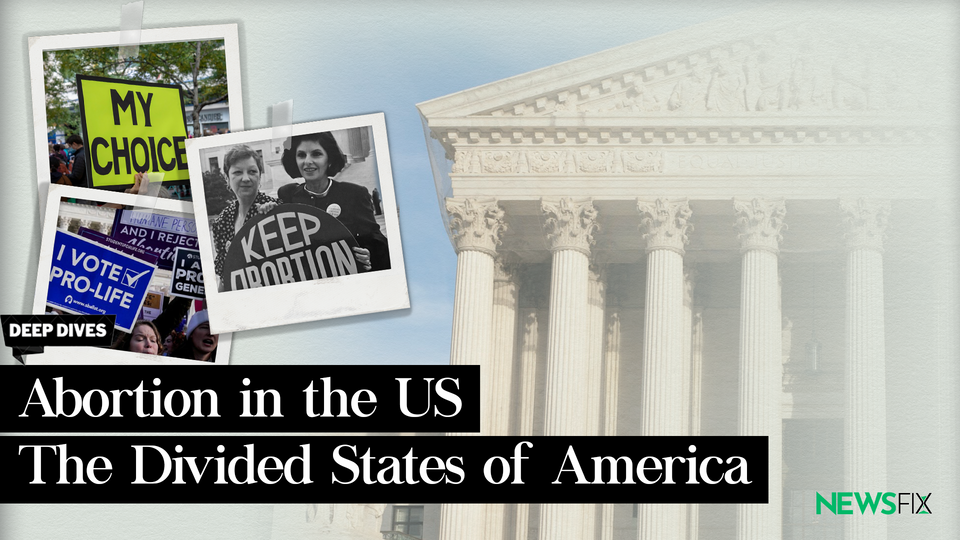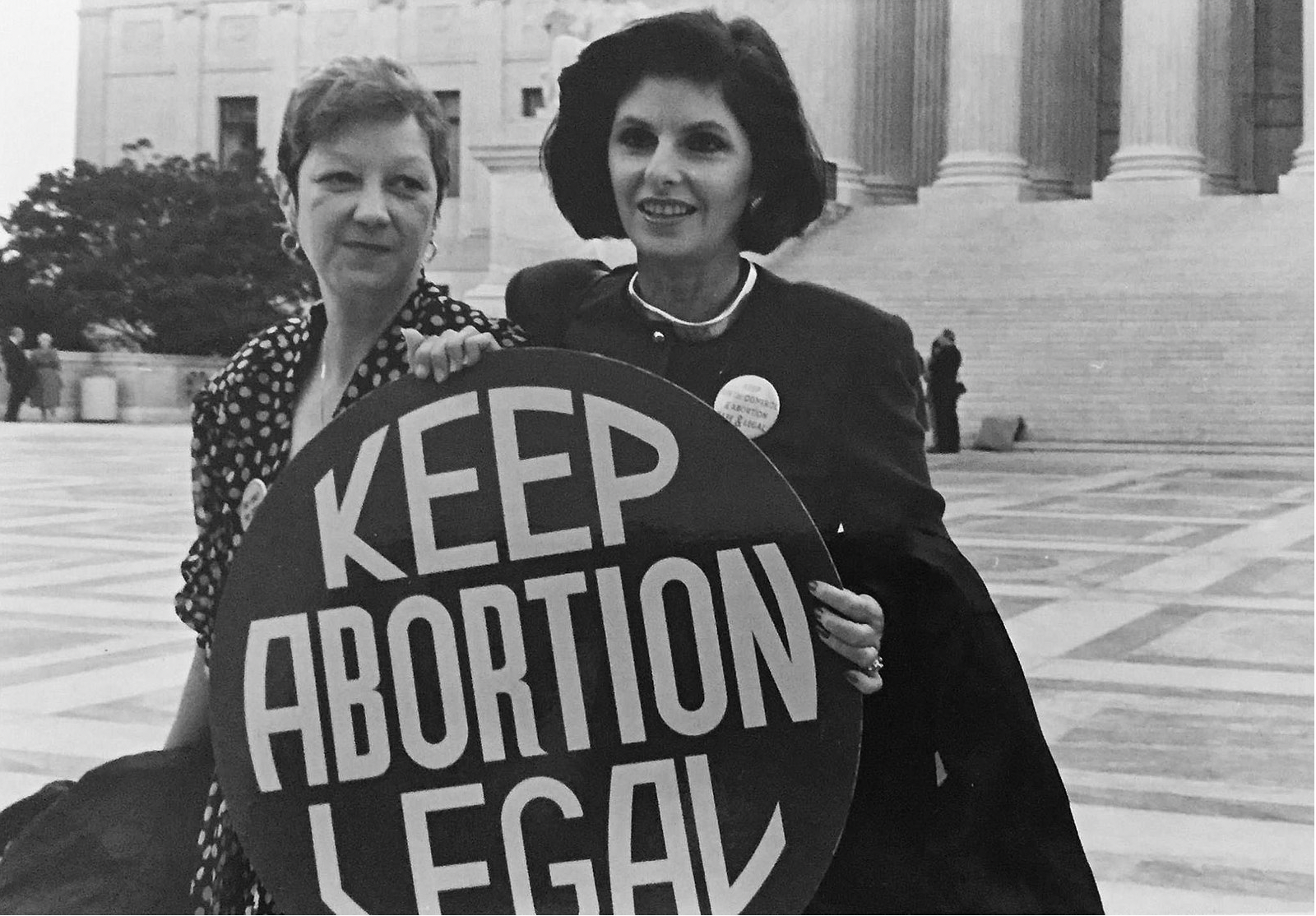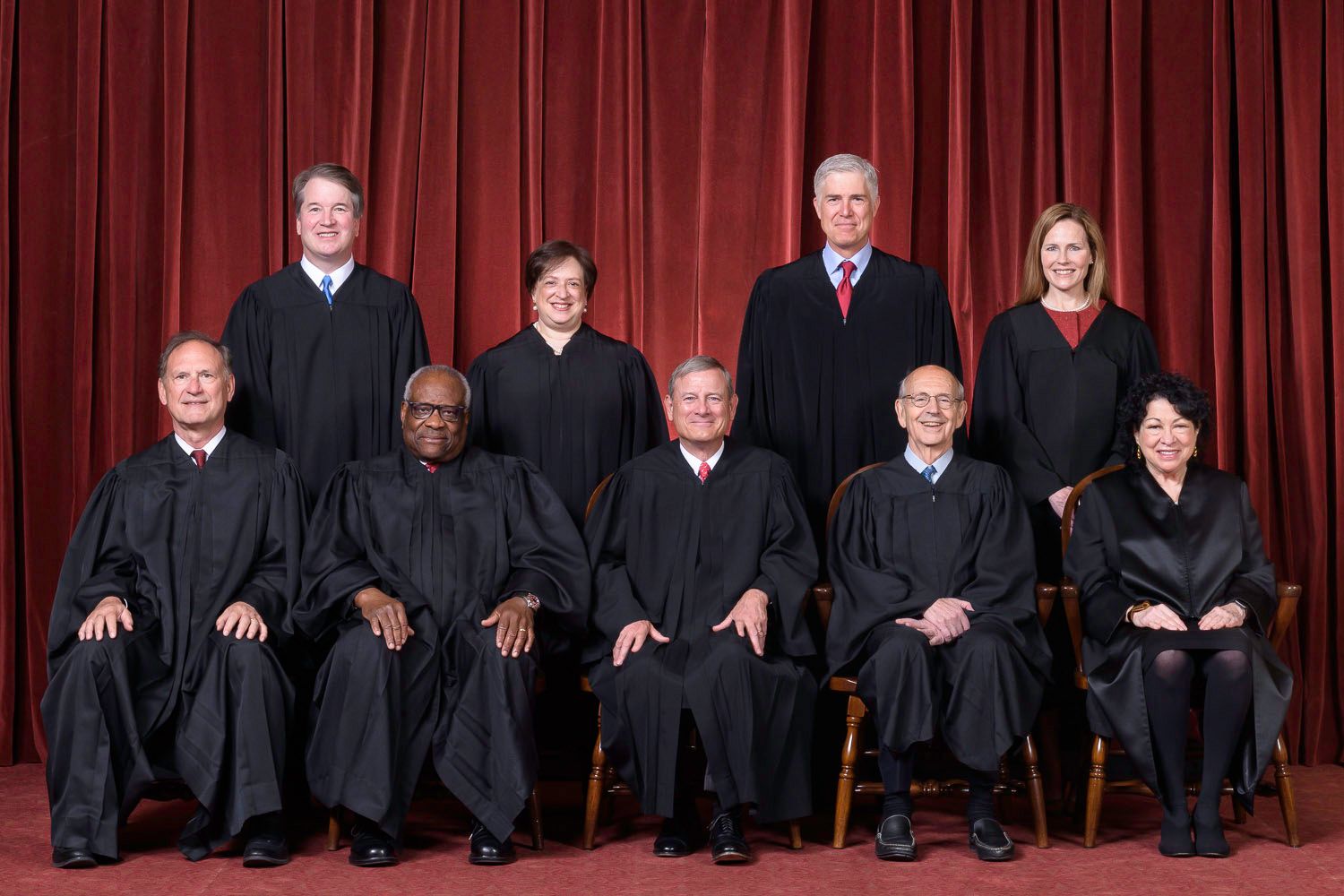🇺🇸 Abortion in the US: The Divided States of America

Morning all,
The debate around abortion is often a contentious and divisive issue, no matter where you are in the world.
That is particularly true for the US at the moment, where the Supreme Court is hearing what has been described as "the biggest abortion case to come before it in 30 years". A highly anticipated decision is expected in June, but you can expect plenty of debates between now and then.
No matter what your view on abortion is, our stance is that we should all understand the dynamics around the debate - from the influence of politics, the make up of the Supreme Court, and what on this issue are truly the divided states of America.
Until Monday,
Your Fixers
ROE V WADE

To really understand abortion in the US, the best way to start is by going back around 50 years - back to Roe v Wade.
A woman called Norma McCorvey took a case against the district attorney of Dallas County, Henry Wade, because she could not legally obtain an abortion in Texas.
At the time, an abortion could only be obtained in Texas if there was a risk to the life of the mother. She alleged the state laws violated her right to privacy as protected by the US Constitution.
McCorvey was known in court documents as Jane Roe in an effort to protect her identity - hence Roe v Wade. She alleged she was the victim of rape - a claim she later admitted was a lie.
The legal battle took a number of years, and McCorvey put the baby up for adoption. However, in 1973 the Supreme Court ruled in Roe's favour - deciding with 7 votes to 2 that abortion was a constitutional right for women under the 14th amendment, the right to privacy.
WHAT DID THIS RULING MEAN?
The Supreme Court ruling paved the way for the "trimester" system, and affected laws in 46 states across America.
What was the trimester system? Basically, the court divided a woman's pregnancy into the three trimesters, applying different rights to each. Critically, under the ruling a woman had the right to an abortion up to the point of viability.
- First trimester: A woman could get an abortion at her own discretion.
- Second trimester: individual states had the ability to "regulate", but not outlaw abortion.
- Third trimester: This is when the foetus became viable - when it was considered to be able to live outside the womb. In these circumstances, individual states had the right to regulate or outlaw abortion, except in circumstances where the life or health of the mother were at risk.
Remember: Most experts in this area estimate that foetal viability - where a foetus can survive outside the womb - comes at around 24 weeks into a pregnancy.
ROE REGRETS?
It is important to note that the views of Norma McCorvey (Jane Roe) were unclear right up to the point of her death in 2017.
In 1995, McCorvey said she was against the legalising of abortion she had fought for 22 years earlier - and started 'Roe No More', a pro-life outreach organisation.
However, in new footage taken before her death in 2017, she admitted the change in stance was prompted by an evangelical anti-abortion group paying her to do so.
“I took their money and they’d put me out in front of the cameras and tell me what to say.... It was all an act... if a young woman wants to have an abortion, that's no skin off my ass. That's why they call it choice.”- Norma McCorvey

HITTING THE HEADLINES THIS YEAR
The abortion debate was brought back into the headlines late last summer, when Texas introduced a ban on abortions once cardiac activity was detected.
This is usually at around the six-week mark, and many pro-choice activists noted women often might not know they are pregnant before then.
The law pretty much wiped out abortion services in the state of Texas - but many wondered how that law could be allowed to be implemented.
The law - known as Senate Bill 8 - is quite unique, which is why it has been very difficult for abortion providers to take legal action against it.
What is crucial to know about this law is that it forbids the state to enforce it. Instead, ordinary citizens can sue anyone they consider to have carried out an abortion, or assisted in the process. The incentive is that if they sue successfully, they will receive at least $10,000 in damages.
This unusual set up means the law is "notoriously difficult to topple in court".
THE MISSISSIPPI CASE
Remember we said the Supreme Court is currently hearing the biggest abortion case to come before it in 30 years?
Well, we're referring to an attempt in Mississippi to ban abortions after 15 weeks. A key difference between this and the Texas law mentioned above, is that this one would be enforced by the state rather than private citizens.
Back in 2018, the law was enacted but never actually came into effect because it was blocked by courts. If the law was introduced, abortions would only be permitted after 15 weeks if there was a medical emergency or a "severe foetal abnormality". Rape or incest would not be grounds to access an abortion beyond 15 weeks in this scenario.
Worth noting: The bigger picture in this is pointing out the measures the state's Republican-led leadership has already made in restricting access to abortion. There is just one abortion clinic left in the entire state of Mississippi - a state about half the size of England.
It also worth pointing out that less than 1% of the 3,005 abortions carried out in Mississippi in 2018 occurred after 15 weeks. This is according to the most recent data available by the CDC - Center for Disease Control. No abortions were carried out that year beyond 18 weeks.
The Supreme Court angle here: The question that is really being put to the Supreme Court here is whether or not abortion is a right up until the point of viability - when a foetus can live outside the womb. As mentioned, most experts put this at approximately 24 weeks into pregnancy.
Bigger picture: Mississippi had 22 abortions occur beyond 15 weeks in 2018, in a state with a population of nearly three million people. The ban is widely seen as an attempt to have the legality of abortion brought to the Supreme Court, rather than address a perceived issue within the state.
SO, THE SUPREME COURT
You might be wondering why some states want to have the abortion debate brought back to the Supreme Court.
Back in 2016, then presidential candidate Hillary Clinton described the Supreme Court as the "central issue" in the contentious election.
The reason for this was because US presidents nominate justices for a 'job for life' on the Supreme Court, and then rely on the Senate to confirm them.
With the Supreme Court having such a profound impact on American society, the election of a president is a telling sign in how the court - and thus the country - might look, should they have the opportunity to nominate a justice.
During the 2016 election, the question was often raised of why so many evangelical Christians gave their support to Donald Trump - a twice divorced man who said he was "fine" with same-sex marriage, and "very pro-choice" back in 1999.
Well, those views on abortions had drastically changed by the time he debated against Clinton in October 2016.
Trump said if elected and given the opportunity to appoint a new justice to the Supreme Court, he would be appointing "pro-life judges". He also expressed his desire to see the right to set laws on abortion go back to individual states.
As you know, Donald Trump won that election, beating Hillary Clinton in the electoral college. During his one-term in office, President Trump had the opportunity to appoint three justices to the Supreme Court.
He was the first president with the opportunity to appoint three justices since Ronald Reagan in the 1980s.
You might remember that in September 2020, just weeks before the presidential election, Ruth Bader Ginsburg died. RBG was considered a liberal icon for many, and before her death had expressed her wish for her replacement on the Supreme Court to be appointed by whoever won the election, but not before.
Many of the polls at that time were indicating Joe Biden would win the presidency in November, so Democrats pushed for a delay in the appointment - an argument Republicans had made in the past.
In the end, President Trump appointed a conservative justice called Amy Coney Barrett to fill the seat of the late RBG.

THE CURRENT MAKE UP OF THE SUPREME COURT

The Supreme Court of the United States - or 'SCOTUS' as it is often referred to - is made up of one Chief Justice and eight Associate Justices.
Officially, the Justices should all follow the law objectively. However often times - but not always - how a justice might interpret the law tends to be in line with the policies of the president who nominated them.
Justices appointed by Democrat presidents are widely considered to be liberal. Meanwhile, justices appointed by Republican presidents tend to be conservative. This is often thought to be the case on polarising issues like gun control and abortion.
With that in mind, there is currently a 6-3 conservative majority on the Supreme Court. This means that even if one of the justices appointed by a Republican president interpreted the law in an unexpected way, there could still be a 5-4 conservative majority.
Back to Mississippi...
Late last year, the Supreme Court began to hear oral arguments in the case. Based on questions asked by the justices, The New York Times suggested the court "seemed poised to uphold the Mississippi law".
An NBC news reporter also said "it's hard not to believe... that Roe v Wade is in some trouble here".
The Chief Justice, John Roberts, appeared to be the only one of the six conservative judges who believed in a more moderate approach, suggesting the Mississippi law could be upheld without completely overturning Roe v Wade.
As many media outlets pointed out, should the other five conservative justices want to overturn the precedent entirely, they have the majority to do so. Let's see what happens.
"Will this institution survive the stench that this creates in the public perception that the Constitution and its reading are just political acts?" - Justice Sonia Sotomayor
*Sotomayor was appointed to the Supreme Court by President Barack Obama, and is counted as one of the three liberal justices.
IF ROE WAS OVERTURNED
It is believed a Supreme Court decision on Mississippi will come in June or July, but many Republican-led states are already preparing for the possibility Roe will be overturned.
According to the BBC's Ros Atkins, "individual states have passed more abortion restrictions this year (2021), than in any other year since Roe v Wade".
Somewhere between 21 and 24 states - so nearly half - already have laws or amendments in place that would make them "certain to attempt to ban abortion as quickly as possible".
On the other side of the debate, an estimated 15 states and the District of Columbia have laws in place that would protect the right to abortion in the absence of Roe.
Worth noting: Speaking to how aligned this debate can be with politics, all 15 of those states voted for Biden in the 2020 election.
Here is a really helpful link breaking down each state and the laws etc, and below is a map showing which states are "certain or likely" to ban abortion is Roe v Wade was overturned.
WHAT ABOUT THE GENERAL PUBLIC?
A GALLUP poll from May 2021 shows 70% of Democrats are pro-abortion, while 74% of Republicans are anti-abortion rights.
According to Pew Research, a majority of Americans (59%) believe abortion should be legal in all or most cases. Less than 40% think it should be illegal in all or most cases.
It will come as no surprise that religious affiliations and views on abortion tend to be deeply intertwined. For example, more than three quarters of white evangelicals say abortion should be illegal in most cases.
When it comes to Catholics there is a more even split - 55% favour legal abortions in most cases.
When it comes to those who are not affiliated with a religion, 82% say abortion should be legal "in all or most cases".
Back in 2019, seven in ten Americans said they would not like to see the Supreme Court completely overturn the precedent set by Roe v Wade. When it came to Republicans, views on that were almost half and half - 50% saying they didn't want it completely overturned, 48% saying they did.
While at the moment there is a lot of guessing, speculation, wondering and for some even worrying around how the Supreme Court will rule in June, we hope this piece has been as helpful and interesting for you to read as it was for us to research.
Our content is 100% free, so by sharing it with others and encouraging them to subscribe you are helping us in so many ways. Thank you!
